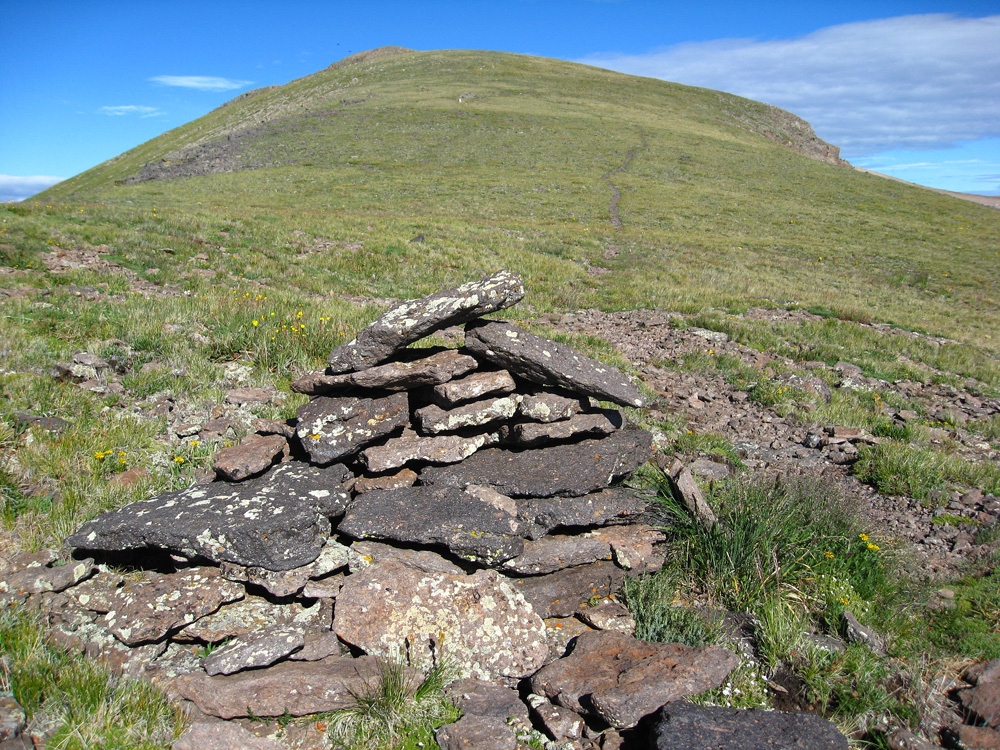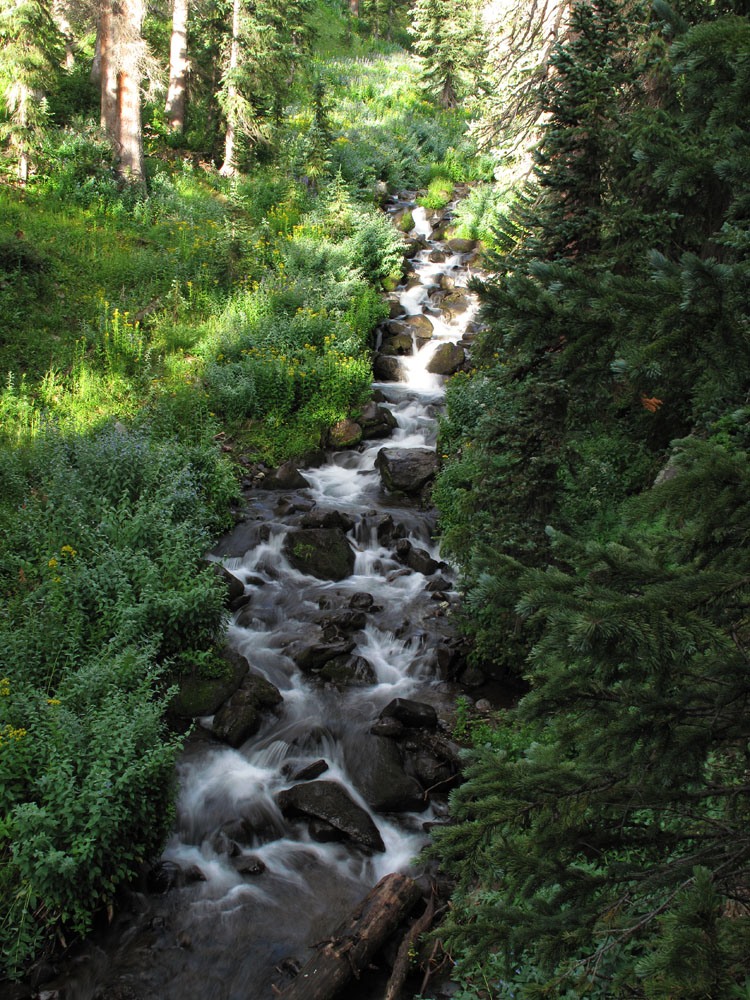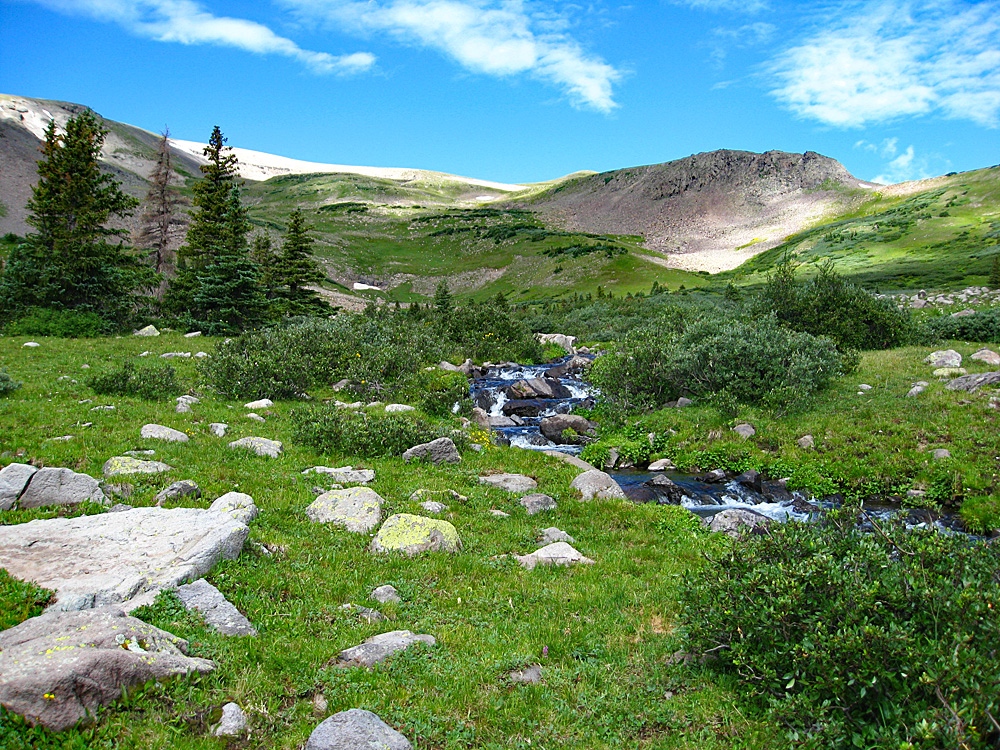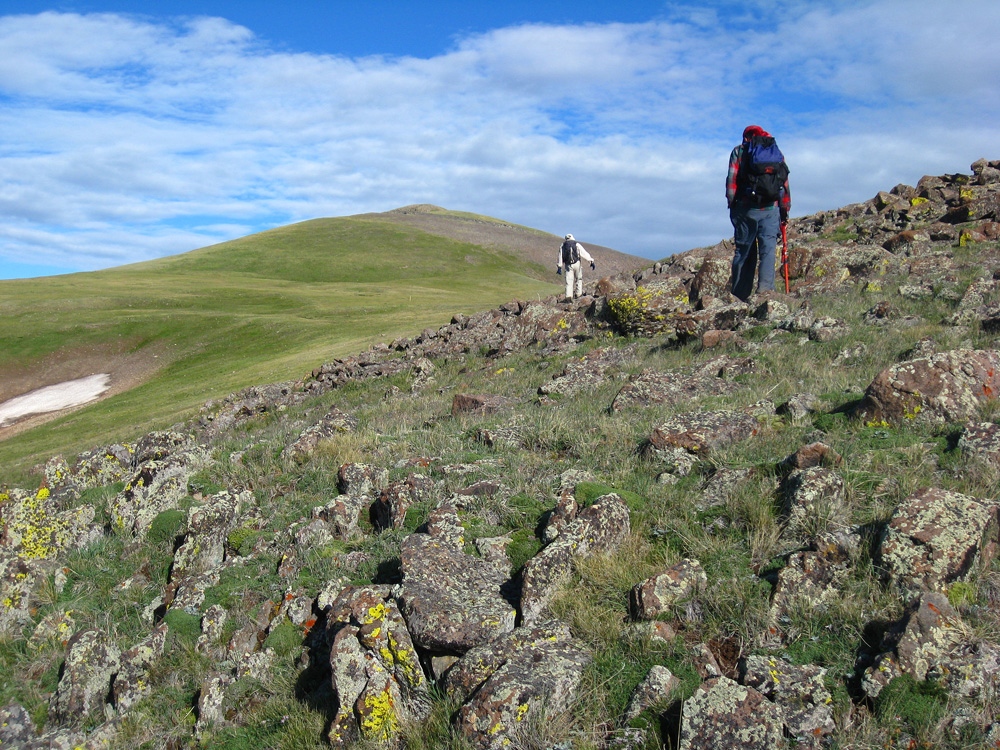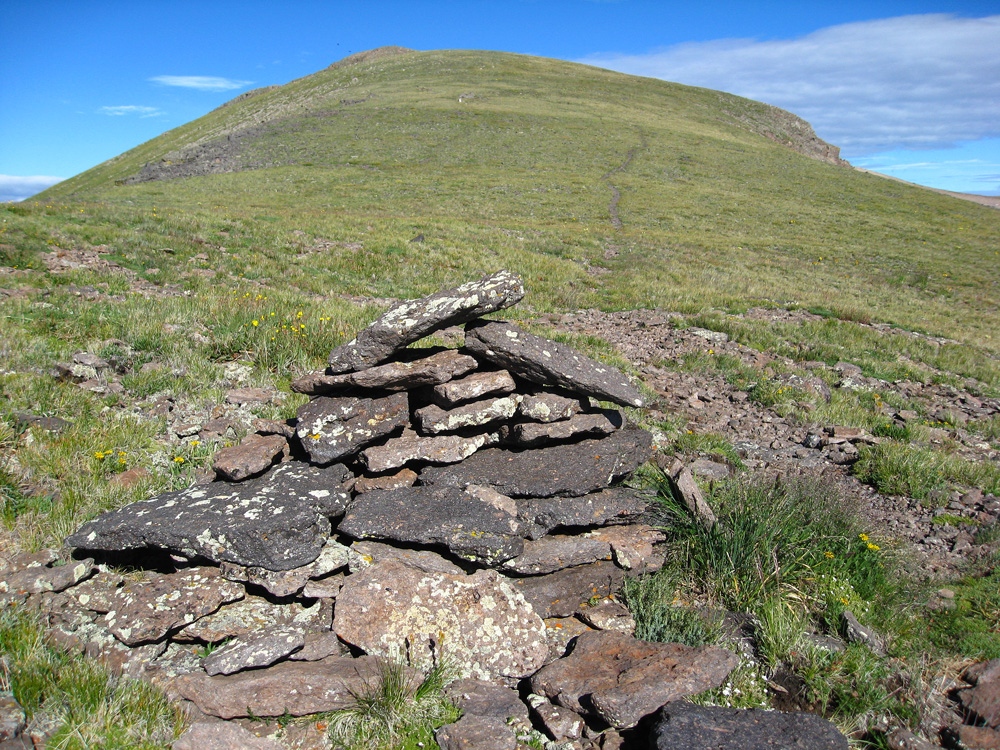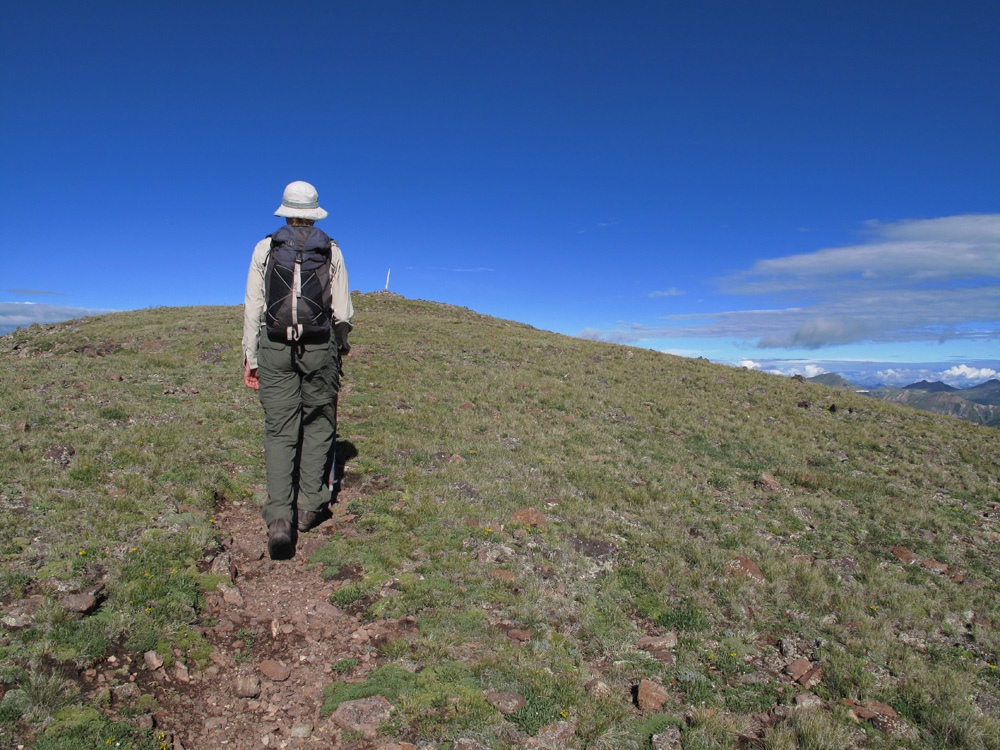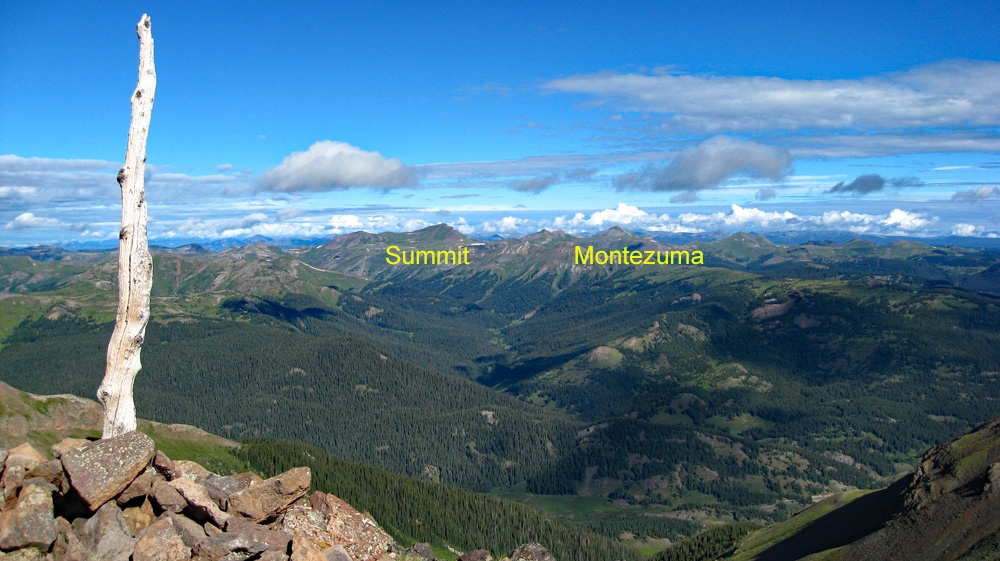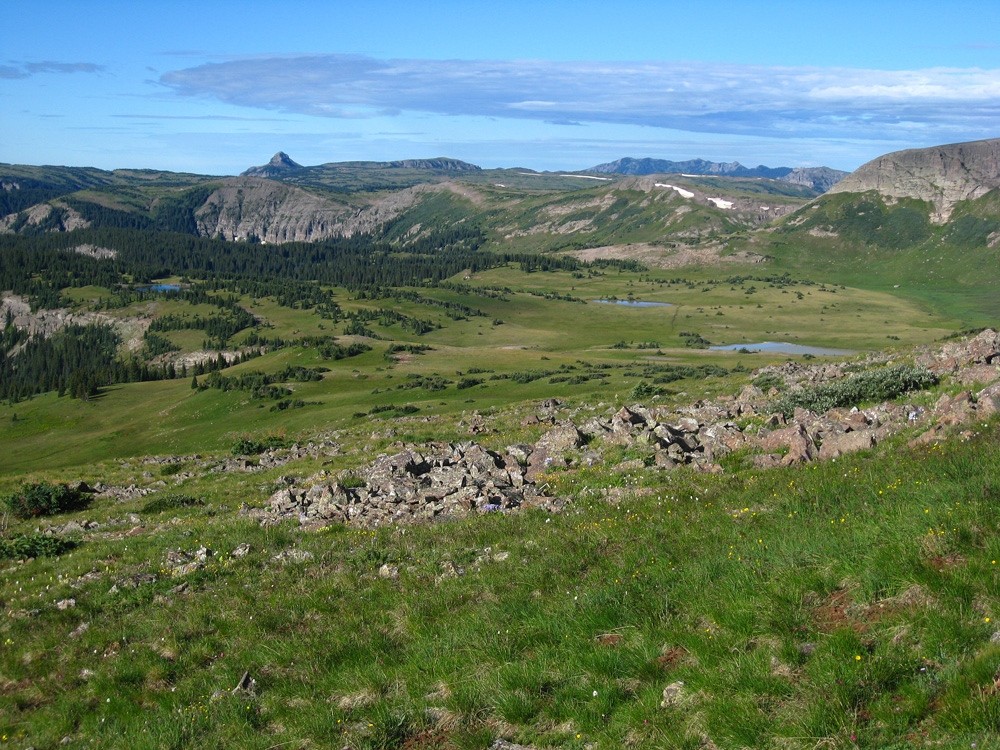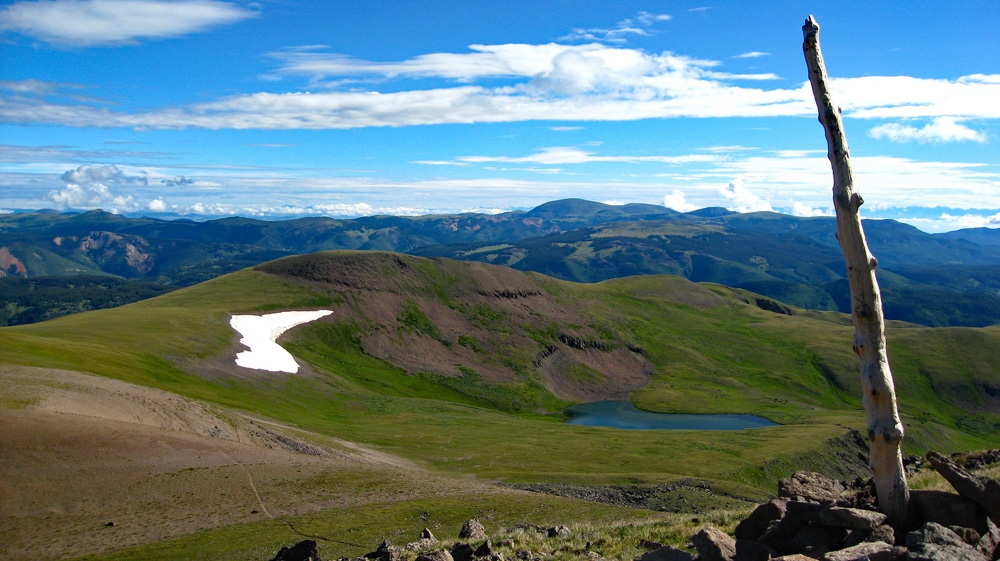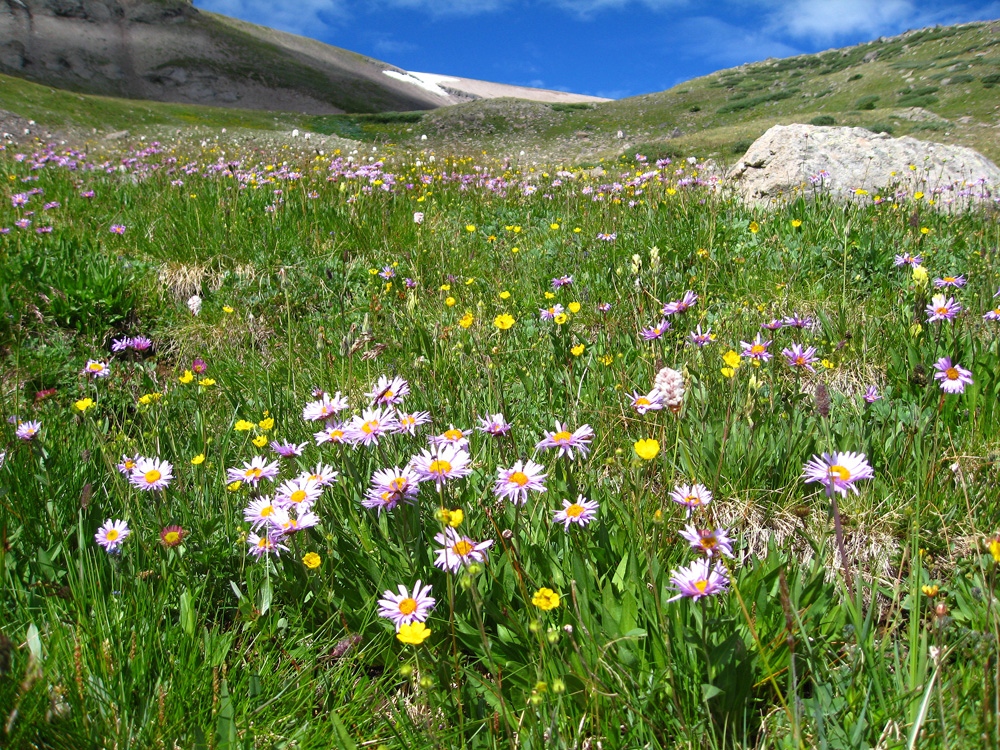Begin by hiking westward on the trail that leads off from the 180° curve in the road. While this trail does not show on older version of the Rio Grande national Forest maps, it does show on newer sources which is why we used the FSTopo 2016. Hike uphill on switchbacks, staying on the north side of Saddle Creek. The trail will cross the creek at about 11,400 ft. (no bridge of any sort but not difficult) and will lead south into a minor basin. In this basin, there are two small tarns indicated on the survey map just above 11,520 ft. This is a nice, grass-filled basin, and also filled with cattle and fresh cowpies. On the western slope of the basin, up above a swath of willows and higher than the cattle, we spotted four bucks observing us from above. We tried to circle around the basin to get over to that slope, but decided there was too much muck to cross in the vicinity of the ponds so we dropped back a little and cut over to a group of trees, walked along the edge and then started gaining the slope above the ponds. There was a way to proceed up this slope and avoid most of the willows, but there was one stretch, fairly high up, where we had to punch through the chest high tangle for 20 yards or so before gaining an open tundra/rock and talus slope that then led us on up to the very prominent east ridge of Conejos. We hit this ridge at a kind of flatter section, just below the 12,400 foot contour line.
It is also possible to follow the trail all the way to the east ridge, then pick up the trail that remains on the east ridge to the summit. We have drawn this in on the map. The mileage would go up from 2.8 to 4.3 one-way because of the added switchbacks and how the trail swings further east. The trail will gain the east ridge around Pt. 12,160.
From here, on, it is just a stroll in the park. The survey map indicated a trail going all the way to the summit and we did indeed find that and followed it. The terrain was virtually all tundra with some embedded rock sections. As we approached the main summit mount, we spotted probably the same four bucks bolting away from us. Again, the view is extensive and beautiful. To the south of the summit lay a vast tundra-filled basin of grass and sparse trees. We could hear in the distance, the bleating of domestic sheep and eventually spotted them pouring across a minor ridge into this basin like a wave of white spots all moving in unison. After an appropriate summit visit with final photos of your accomplishment, begin your descent, but lets go back a slightly different way to keep things interesting.
Hike down the north ridge of the peak a ways, then turn east and drop off what may be a late season snowbank and into the huge, Tobacco Lake basin on the northeast side of Conejos. There is some steep talus to negotiate at first, and then you will come into the flower and grass filled section of the basin and the headwaters of Saddle Creek. There may be more cattle grazing here. We found a number of flowers to photograph. We also found some unusually shaped trees to photograph. Back in the forest and on the last section of trail, there were even more flowers that temptingly posed for our cameras. Eventually you can rejoin the approach trail near where it crosses Saddle Creek and return on good trail to your vehicle.
Links to other information, routes & trip reports for this peak that may be helpful.
